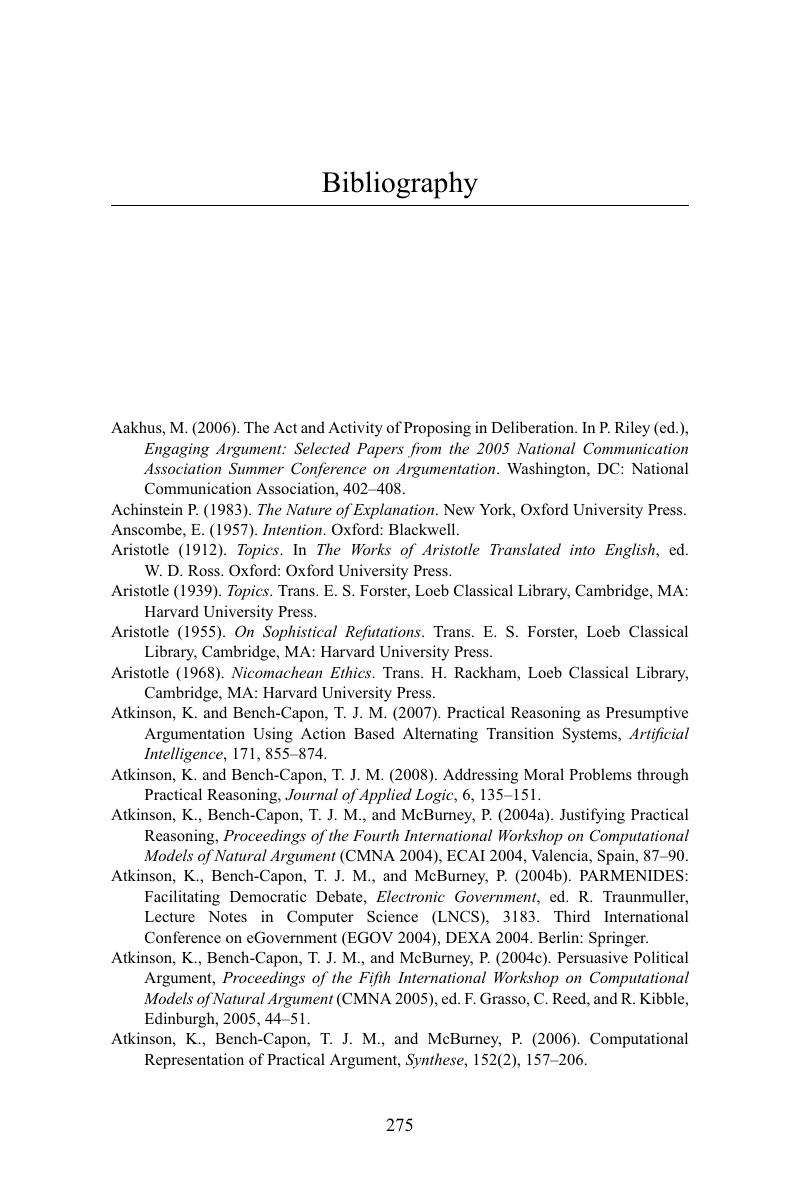Book contents
- Frontmatter
- Dedication
- Contents
- Acknowledgments
- 1 Introduction to Practical Reasoning
- 2 Practical Reasoning in Health Product Ads
- 3 Formal and Computational Systems of Practical Reasoning
- 4 Practical Reasoning in Arguments and Explanations
- 5 Explanations, Motives, and Intentions
- 6 Practical Argumentation in Deliberation Dialogue
- 7 Goal-Based Argumentation in Different Types of Dialogue
- 8 Practical and Epistemic Rationality
- Bibliography
- Index
- References
Bibliography
Published online by Cambridge University Press: 05 November 2015
- Frontmatter
- Dedication
- Contents
- Acknowledgments
- 1 Introduction to Practical Reasoning
- 2 Practical Reasoning in Health Product Ads
- 3 Formal and Computational Systems of Practical Reasoning
- 4 Practical Reasoning in Arguments and Explanations
- 5 Explanations, Motives, and Intentions
- 6 Practical Argumentation in Deliberation Dialogue
- 7 Goal-Based Argumentation in Different Types of Dialogue
- 8 Practical and Epistemic Rationality
- Bibliography
- Index
- References
Summary

- Type
- Chapter
- Information
- Goal-based Reasoning for Argumentation , pp. 275 - 284Publisher: Cambridge University PressPrint publication year: 2015



